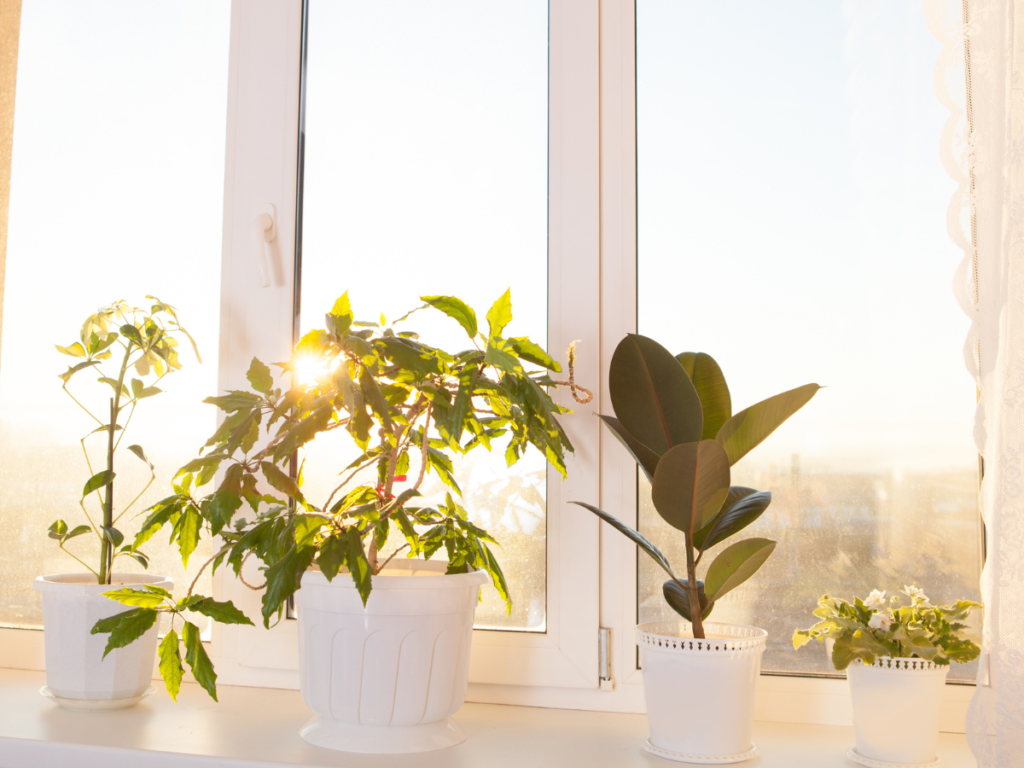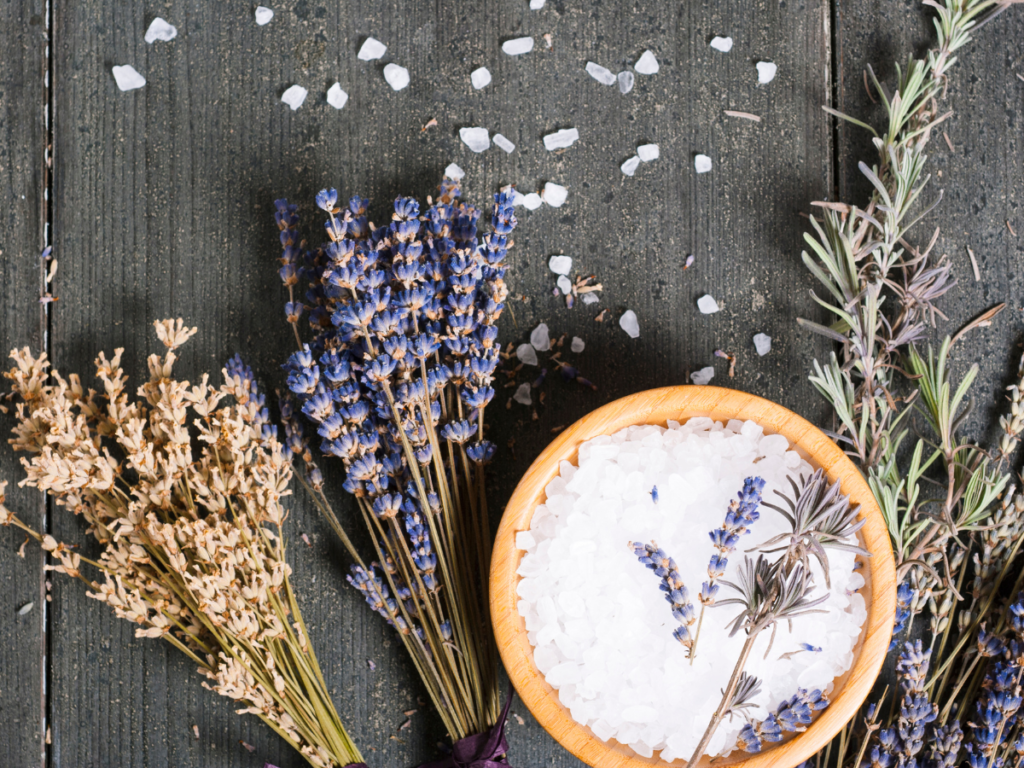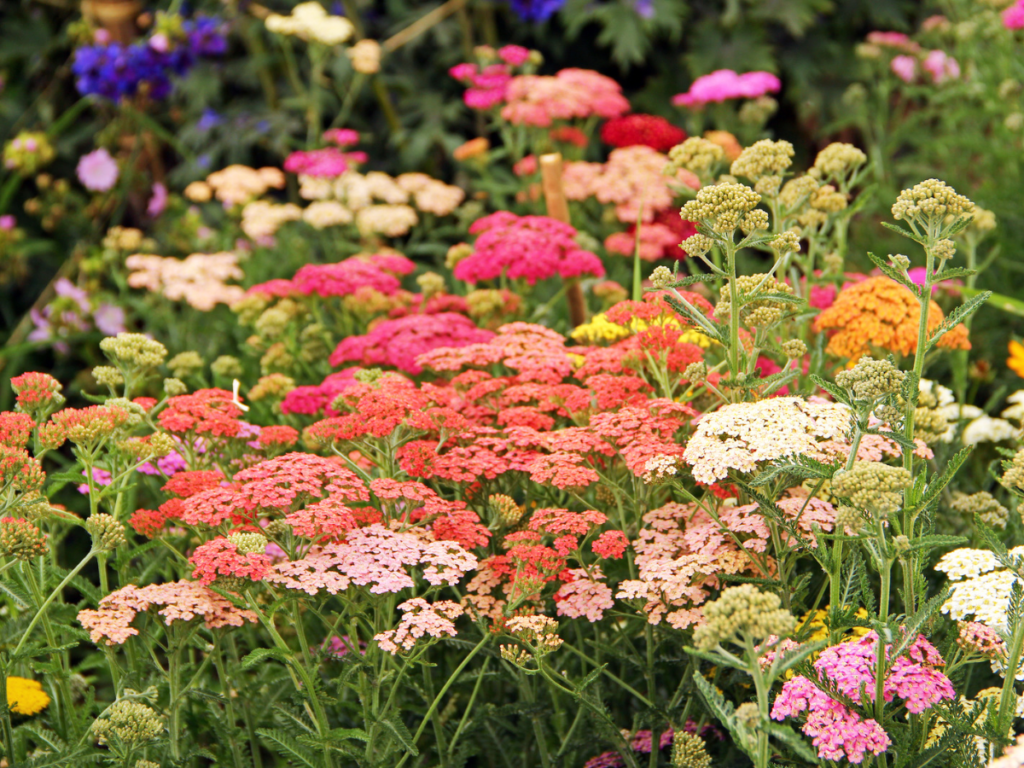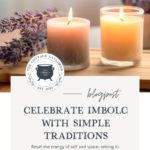Imbolc is a time to cleanse the hearth, stir creativity, and prepare oneself for the coming seasons of growth and change.

In the northern hemisphere, Imbolc marks the beginning of late winter. Halfway between Winter Solstice and Spring Equinox, the lengthening daylight is finally noticeable, and the promise of Spring’s return is palpable.
Imbolc is a time of purification, renewal, and hope. This is the sabbat of quiet reflection, cleansing, and setting intentions.
History & Folklore of Imbolc
Imbolc is most closely associated with Brigid, one of Ireland’s most beloved goddesses, who is a patron of poetry, healing, smithcraft, and fertility.
Brigid’s association with fire and the hearth rendered her a powerful symbol of protection, inspiration, and transformation. The majority of Imbolc customs are based on calling down her blessings on the household, livestock, and the coming growing season. When Ireland was Christianized, Brigid was syncretized with Saint Brigid of Kildare, and she retained much of her religious lore.
In folklore, Imbolc marks a time of light and purification. It is a celebration of the resurgence of the sun’s power, as demonstrated through the lighting of candles and fires. These were believed to dispel the remaining darkness of winter and bring forth the first glimpses of spring. The customs included cleansing and refreshing the home, weaving Brigid’s crosses from rushes or straw, and leaving food or milk offerings to placate her.
Imbolc Traditions For The Cottage Witch
Unlike Solstice sabbats which lend themselves to celebrations of feast and gathering, Imbolc is a quiet, internal time, perfect for solitary rituals and traditions. This sabbat begs to be approached with simplicity and lends itself best to rituals of home cleansing, self-care, and planning for the upcoming warmth.
Here are some simple Imbolc traditions to honor the energy of the sabbat.
Deep Clean & Bless Your Home

Of all the traditions associated with Imbolc, the most basic and most energetically aligned is the practice of deep cleaning the home. I’ve heard it said that the phrase “spring cleaning” stems from the tradition of home cleansing for Imbolc, though I can’t remember where I heard it.
This isn’t to say you should spend the whole day of Imbolc cleaning. Instead, set aside time in the week leading up to Imbolc to thoroughly clean your entire home. Clean behind things, under things (including kitchen appliances), up high, down low; clean everywhere that gets neglected during regular cleaning throughout the year.
There’s great power in breaking up stagnant energy, both physical and energetic. And with Imbolc being a time of renewal, cleaning and cleansing your home is an excellent way to honor the sabbat.
On Imbolc, with a freshly cleaned home, perform a simple home blessing ceremony. Hearth & Harmony Spell Oil is an excellent choice for anointing your door, windows, and hearth.
Indulge In An Evening Of Self-Care

When I talk about self-care, I am not talking about the $1.8 trillion self-care industry that’s anchored in consumerism. No, when I talk about self-care, I’m talking about nourishing yourself with ritual baths, natural home facials, and time alone with a good book and a cup of herbal tea. An evening with a dear friend, filled with good food and lots of belly laughs, is also a good choice.
These are the things that support our mental health, nurture our spirit, and help our energy to rebalance.
This Imbolc, set aside time to care for yourself and recharge your spirit.
Plan Your Summer Garden

My absolute favorite Imbolc tradition is the tradition of planning my summer garden. In my area, it’s far too early to think about planting seeds. But Imbolc is the promise of spring and sowing seeds, making it the perfect time for such a task.
If you garden with containers, map out what plants you’ll place in which containers. Next, plan where those containers will be placed in your outdoor space. Think about how many hours of sunlight each plant needs, which plants grow well together (companion planting), and how certain locations might impact water needs, such as wind exposure.
If you have a dedicated, in-ground garden plot, then you only need to decide where to plant things and which plants will go together.
After you’ve mapped everything out, figure out your seed sowing schedule. Most seeds should be sown indoors 4-8 weeks before transplanting outside. Look up information on the seeds you plan to grow for specifics on how to properly start them from seed.
If you’d like to learn more about sourcing seeds for your garden, check out my post on building a seed collection.
Journal Your Intentions

While the start of the Pagan wheel is Samhain, it’s Imbolc that offers the perfect energy for setting intentions. It’s during the upcoming warm months when life is most active, so while Samhain is great for reflection, Imbolc is a time for looking ahead.
What is it you intend to achieve in the upcoming year?
Set aside a dedicated journal for Imbolc intentions, or a section of your book of shadows. Vision boards are excellent expressions of intention and great tools for manifestation. Imbolc would be a great day for crafting annual vision boards.
Dream big and get that magic in motion!
Keep Imbolc Traditions Simple
Imbolc is a time of quiet promise. It’s a soft sabbat, free from rough edges and high vibrations; a time for hearth and home. Avoid hosting a large gathering on Imbolc, reserving feasts for Solstice celebrations.
With the energy of renewal, take the time this Imbolc to reset the energy of self and space, setting in motion the intentions for the coming year.


 Blessing The Forge: Magically Enhance Your Cast Iron Cookware
Blessing The Forge: Magically Enhance Your Cast Iron Cookware